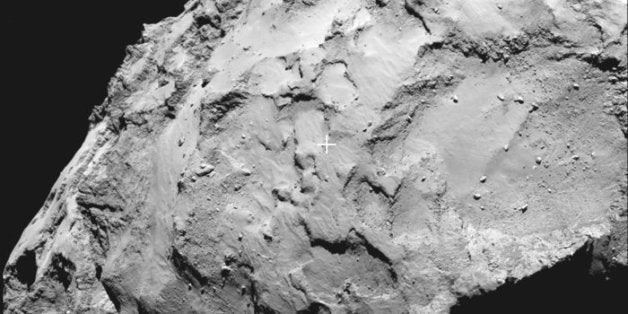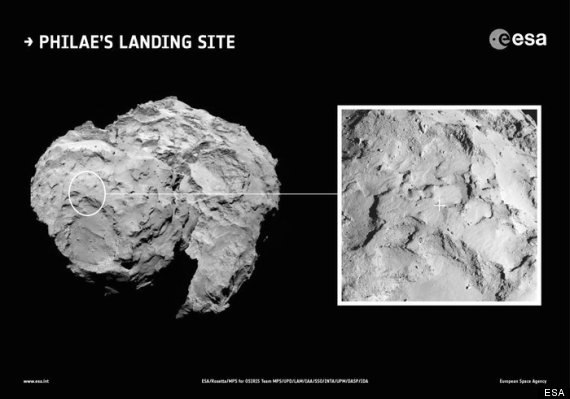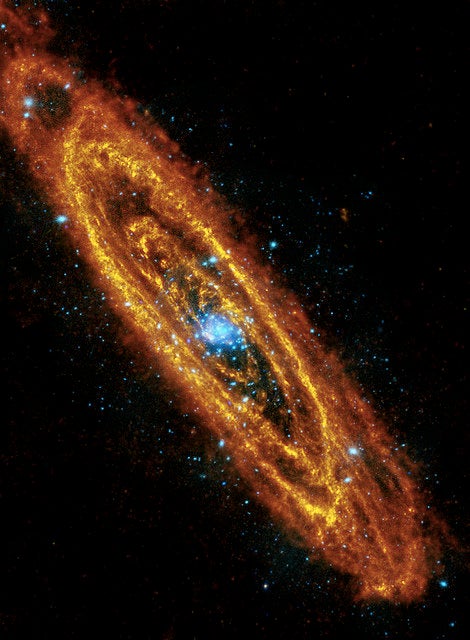
Now we know.
The European Space Agency has picked the landing site on the comet that is the target of its historic Rosetta mission, the agency announced in a written statement.
The agency says the first-of-its-kind landing, now scheduled for Nov. 11, will target Site J--a region on the "head" of Comet 67P/Churyumov-Gerasimenko that is both scientifically interesting and less hazardous than other sites considered by the agency.
"As we have seen from recent close-up images, the comet is a beautiful but dramatic world--it is scientifically exciting, but its shape makes it operationally challenging," Stephan Ulamec, of the DLR German Aerospace Center, said in the statement. "None of the candidate landing sites met all of the operational criteria at the 100% level, but Site J is clearly the best solution."

Site J is on the head of Comet 67P/Churyumov–Gerasimenko. An inset showing a close-up of the landing site is also shown. The inset image was taken by Rosetta’s OSIRIS narrow-angle camera on August, 20 2014 from a distance of about 67 km (42 miles). The background image was taken on August 16 from a distance of about 100 km (62 miles). The image scale is 1.2 meters/pixel, and the comet is just over 4 kilometer across at its widest point.
Site J is relatively flat, meaning the mission's Philae lander will be less likely to topple over when it touches down. In addition, the site appears to have few boulders and ample sunlight--important since the 100-kilogram (220-pound) lander needs illumination to recharge its batteries, according to the statement.
The landing will be the next big step for the decade-long Rosetta mission, which aims to use scientific data collected from the comet to gain a better understanding of what the world looked like at the birth of our solar system, Reuters reported.
Whatever happens on Nov. 11, the Rosetta scientists foresee a nail-biter.
"We're getting very close now, and it is fascinating but I have to say also quite frightening to some degree--that 20 years of work boils down now to just a few hours, Ulamec told the BBC. "Are we going to be successful, or will we be unlucky, hitting a boulder that just happens to be under the lander?"

